Each Degree within Freemasonry is only the simplest of introductions to differing parts of Masonry.
Should you choose to experience only these introductions, you miss out on the most important parts of Masonry’s library.
Many Brothers have no clue as to what kind of “Craft” library they actually have in their home or office. Most of these Brothers don’t care that they don’t know.
– Coach John S Nagy
Category One
Take a good look at the typical Brother’s library.
On his shelves will likely be found code books that “letter out”, in some fashion or form, the rituals of his Jurisdiction. He will probably also have a book that is called a “monitor” that includes the non-esoteric portions of his Jurisdiction’s rituals.
This book would include prayers, portions of lectures, and some aspects of his rituals that are not esoteric.
He may have more of the same from other jurisdictions.
When the Brother was properly mentored and instructed, his shelf may include booklets prepared by his Grand Lodge.
They usually include an introduction to his Fraternity, glossaries of the words and symbols used within each Degree along with explanations that support the ritual he went through.
It might include what to say to non-members when asked about the society and perhaps even something about how to join when interested.
If the Brother is a bit more involved in the organization, next to them may be the Digest of Law that is used to guide his membership.
If he is a hard-core practicing member, included on his shelf may be handbooks categorized as “Masonic Etiquette”, “Masonic Law”, “Masonic Lore”, “Masonic History”, “Masonic Allegory”, “Masonic Tradition”, “Masonic Lexicon”, “Masonic Grand Lodges”, “Masonic Floor-Work (a.k.a. “Masonic Choreography”)” and “Masonic Symbolism”.
If he was interested in the Society some time before his petitioning, he will likely have other books in a section dedicated to his efforts to learn more about it.
Those books might include the many standard exposés and guides that can be found fairly easily by anyone desiring to find them.
They may also include books that describe the Society, its rituals, and its supposed history.
Included in these may also be books about famous or well-known members of the Society and even historical events and political occurrences believed to somehow be connected with the Society and its members.
If he is hyper-enthusiastic about the organization and about other things, that are considered external to it by the majority of the members, he may have books that speculate upon the society’s origins and outside connecting interests.
They may include on their shelves books that show supposed connections between the Society and Rosicrucianism, Cabbala, Alchemy, Mysticism, Biblical Characters, Knights Templar, Illuminati, Divinity, Religion, Underground Organizations, Secret Societies, Shadow or Off-World Governments, New World Orders, Shakespeare, Atlantis, Time-Travel, Ancient Astronauts and many others that have yet to be imagined or considered by the masses.
There are much more that could be added to this list. Officer training manuals and guides for one.
Papers written about many of the above topics, some espousing past glories, some encouraging Brothers to reach out and reconnect and a few that delve into the minutest detail about some long forgotten organizational practice might also be added.
Books, papers and articles proscribed by Grand Lodge as forbidden may also be there, proudly displayed but easily concealed when necessary.
There is always something that can be added to the shelves when it comes to the Society.
Category Two
However, when the Brother takes what Ritual points toward, and directs his attentions toward what it espouses, his book shelves are filled with entirely different books.
You’ll see books on personal development and self-improvement. He’ll have books covering finding one’s purpose and understanding what is most important in life and in business.
He’ll have books on emotional, personal and business management, and building strong relationships and creating new ones.
Time management and effective habit formation are also covered.
Books covering grammar, rhetoric and logic abound. Dictionaries with word roots and etymologies are included.
Books covering archaic phrases, terms and obsolete words are also represented.
These books also cover understanding symbols as they are represented in words, phrases, metaphor and allegory. Encyclopaedias covering symbolism, metaphors and slang are alongside them.
Books offering translations from one language to another are most likely present.
Books covering mathematics are there too, and this area includes statistics and probability theory.
Geometry, both classical and contemporary, are there too and include a strong presence of trigonometric studies.
Music theory, to include numbers in time and how each are represented through numbers and symbols are there as well.
Books on physics and astronomy are also represented. These books cover understanding symbols as they are represented in numbers, and numeric patterns.
On these shelves are also classics. These classics cover a wide range of philosophies, theologies, authors, cultures and histories (untethered to and untainted by “The Society of Free & Accepted Masons” literature and influences).
They are each carefully and clearly represented and they have well-worn pages showing much use.
And personal journals and workbooks that track thoughts, frustrations, successes and overall progress are likely to be splattered among all the other books, placed carefully next to that work’s focus.
Library Assessment
If you’re interested in determining what dominates this Brother’s focus, count the number of books that fall into Category One and then count those that fall into Category Two.
Ask yourself: Which of the two dominates the shelves?
As you do this, keep in mind that:
The first category focuses upon the organization and upon being a good organizational member.
It covers everything you need to know about the organization, how to support it, how to share it, how to maintain it, who was and is in it, what happen within the organization when, where and to whom, what words and phrases to use and how to participate.
The second category focuses upon the person.
It covers what has to be learned by that person to become better. This focus includes supporting that person in doing so and shows and cultivates awareness, incentives, actions and skills within that person that contribute to making that person and the world a better place.
As you might have guessed, the overall focus of these books says a lot about the person owned by them.
Suffice it to say, you’ll find by your assessment that the majority of the books on the shelves that fall into the first category to be essentially Freemasonic in focus.
Why Freemasonic? Because each of them is all about some aspect of the Organization which bears its name and those who are members to it.
You’ll find too that the majority of the books that fall into the second category to be essentially Masonic in focus.
Why Masonic? Because each of them is all about Building both men and what they influence in the world as a whole.
Why draw these distinctions?
Great question! Ask yourself the following question:
What is it that actually Makes Good Men Better?
Is it…
Having one title after another bestowed upon you for merely showing up?
Memorizing things you’ll never take the time to understand?
Serving a system whose main objectives are to perform Ritual, Recruit and Retain but not actually support what it espouses?
Or is it…
Cultivating you toward knowing and ordering your heart and head?
Directing your attention toward what is most important in life?
Unburdening you from vice and superfluity?
Building you strong and doing so in virtuous ways?
Showing and teaching you how to better relate to yourself and others – both known and unknown?
Providing you maps, legends and tools along with instructions and skill development on how to apply them effectively to navigate any territory you may encounter – both known and unknown?
Learning how the universe functions and ultimately commanding the very elements of God’s creation – not through some superstitious non-sense, magic or mystical words – but through wisely applying the laws God has laid out for you to use?
So, what does your assessment show you and the world?
What kind of library do you have?
Better yet…what kind of library has you?
Article by: John S. Nagy

John S. Nagy is a multi-degree professional business/life coach and technical advisor who provides coaching support to business professionals through his home office in the Tampa Bay area. John has been in the coaching field since January 1989, running his own coaching practice since that time. He is a prominent Freemason and has written prolifically on the subject.
Author Blog: coach.net
Article Source: buildinghiram
Recent Articles: of current interest
 Keeping Passions and Prejudices within Due Bounds Master your emotions and find balance in a chaotic world with Darren Allatt's "Keeping Passions and Prejudices within Due Bounds." Discover practical strategies for self-awareness, emotional intelligence, and building meaningful relationships. Transform your life with calmness, clarity, and purpose. Start your journey towards emotional mastery today. |
 Masonry in the Age of Leisure - P2 Explore the optimistic future of Masonry in "Masonry in the Age of Leisure" by VVenBro Scott Wisdahl. Delve into the possibilities of a leisure-driven society where technology enhances social bonds, decentralizes the Craft, and reshapes Masonic traditions. Discover how Masonry can thrive in an interconnected, tech-savvy world. |
 Masonry in the Age of Leisure - P1 Embrace the future of Masonry in the Age of Leisure! Imagine an era where technology empowers deeper connections, offering a tapestry of diverse groups united by Freemasonry’s timeless values. Envision hybrid meetings transcending borders, fostering brotherhood across continents. This optimistic future cultivates intellectual growth and social interaction, heralding a Masonic renaissance for all. |
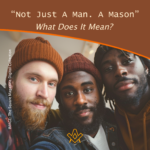 “Not Just A Man. A Mason”: What Does It Mean? Embrace the profound essence of Freemasonry, not merely a group but a journey of integrity, shaping men of dignity. By adopting virtues such as honesty, justice, and brotherly love, Freemasonry transcends time, urging us towards a dignified life. It’s more than being a man; it’s about living with unyielding dignity. |
 Multiculturism and the Culture of Freemasonry Freemasonry, with its deep roots in universal principles such as individual freedoms, education, and the pursuit of science, stands as a beacon of unity in a world divided by conflicting ideologies. By embracing the tenets of Freemasonry, including respect, peace, and mutual understanding, we can navigate societal challenges and foster a more harmonious world. |
 Embrace the new paradigm of eco-conscious living in the 21st century. Freemasonry, a cornerstone of society, must evolve, placing Nature at its heart. Reject anthropocentrism, embrace deep ecology, and champion sustainable living and global cooperation. Let Freemasonry lead by example, advocating for a world where humans and nature coexist harmoniously. |
 How Freemasonry Has Woven Itself into the Fabric of Society Like the weathered stones of an ancient temple, Freemasonry's origins are shrouded in mystery. This fraternal order has woven invisible threads throughout society's fabric since emerging in the 1600s. Despite declining membership, Freemasonry's influential legacy endures, seen in philanthropy, architecture, and the ideals of legendary members. Though facing challenges, revival remains possible if it adapts traditions to the modern era. |
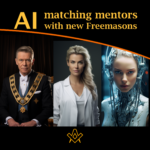 AI help in matching mentors with new Freemasons Harnessing AI for Freemasonry Mentorship: A Comparative Analysis. Freemasonry, an age-old fraternity, seeks to enhance its mentorship program by leveraging AI. While the Grand Master suggests detailed member profiles for matching, a Professional Coach emphasizes personality compatibility. Meanwhile, an AI Bot proposes machine learning for pattern recognition. Dive in to explore the potential and pitfalls of each approach. |
 Masonic Charities P.2 – The Shriners Discover the Shriners' legacy within Freemasonry; delve into their profound commitment to philanthropy and see how Masonic Charities demonstrate brotherly love, relief, and truth. Become inspired by the bonds that unite Shriners around the globe and their impactful work in local communities. |
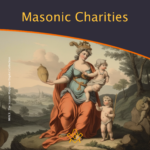 Freemasonry's commitment to charity has always been a priority and remains a core principle, reflecting its mission to promote brotherly love, relief, and truth in the world. Part 1 of the series gives an introduction to the establishment of the main Masonic Charitable endeavours in the 18th and 19th centuries and several key influencers. |
 Solomon Learning and Development Platform The Intersection of Freemasonry and Technology: Embracing the Digital Age with the New |
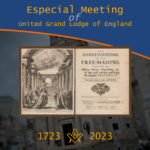 Especial Meeting of United Grand Lodge of England The year 2023 marks the tercentenary of the publication in London of the Constitutions of the Freemasons, based on Enlightenment principles that provide the philosophical foundations of modern Freemasonry. Why are the 1723 Constitutions important? Many Masonic histories have been concerned with ‘when’ and ‘what’. We also explore ‘why?’ |
 Like every other incident of initiation it is in the light of the larger meanings of Freemasonry that we must interpret the Rite of Destitution. But what does it mean? |
 Society of Grand Lodges in Alliance (SOGLIA) is a confederation of Grand Freemason Obediences in which all members obey the principles of Regularity. Assembled annually, in different places of the world, in order to share fellowship and to promote Masonic tradition, SOGLIA members are respecting the autonomy of each Grand Lodge. |
 Confederation of the Grand Lodges of Europe and the Mediterranean - Universal Freemasonry and its intellectual property are less and less taken into account in the current times of constant movement and unclear future prospects. |
 The Book of Law in Brazilian Freemasonry We are informed that, Freemasonry it is not a religion, but the candidate has a belief in a creative principle, which later, we call the Great Architect of the Universe. - by Fernando Rodrigues de Souza |
 Mike's Masonic Walks And Talks WBro. Mike Neville is a Masonic author and lecturer. He offers walks and talks primarily around London, based on his vast knowledge of the area and his specialist subjects, which cover all aspects of Masonic history. |
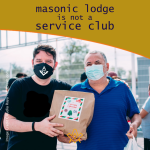 A Masonic lodge is not a service club An address delivered to the 10th Annual Conference of Western Canadian Grand Lodges (1950) in response to the question, "Should Our Western Grand Lodges Sponsor a Specific Program?" By |
 The Order of Bees was established as a youth initiative for the boys and girls of Prince Hall Freemasons, and symbolises the relationship existing between the activities of the youth and the family of bees. |
 The Confederación Masónica Interamericana (CMI) was founded in 1947, is a non-profit organization that groups together 92 Great Masonic Powers, admitted as members and distributed in 26 countries in South, Central, North, Caribbean and Europe. |
 This smartphone app is designed to work with all Freemasons from both Regular and Independent Grand Lodges around the world. |
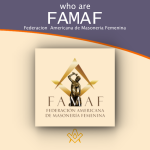 The American Federation of Feminine Freemasonry (FAMAF) is an organization that brings together Grand Lodges, Grand Orients and Confederations of Feminine Masonic Grand Lodges from the American continent. |
 The third largest Masonic Alliance of independent grand lodges, which currently has over 500,000 members in the world and an incredible resource of "good people with a good reputation" from around the world. |
 A Guiding Paw - my faithful 'brethren' A heart-warming story of one Mason's best friends – and how Gary's faithful guide dogs have helped fulfil both his Masonic life but also his valuable work in public service. |
 A visit to the Mother Lodge of Scotland Let me take you to the heart of Scotland to meet our Brethren of the Mother Lodge of Scotland, a journey into one of Freemasonry's deepest roots. Our guide Carlos Oliveira Santos who is from |
 An introduction to VEREINIGTE GROSSLOGEN von Deutschland / UNITED GRAND LODGES of Germany |
 International Masonic Union CATENA An international association of Grand Lodges and independent Lodges, with all true Masonic traditions, which adhere to the basic principles of the equal standing of men and women in Freemasonry |
 Social Impact of Prince Hall Freemasonry in D.C., 1825-1900. Alonza Tehuti Evans discusses Prince Hall Freemasonry, founded by African Americans. |
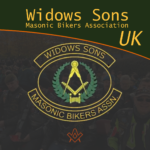 Who are the Widows Sons, and what do they do, and how can you join ? |
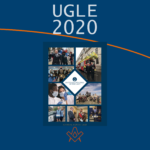 For the first time in its 300 year history UGLE has published an Annual Review |
 Founded in 1919 and named after the Grand Master of the Knights Templar, this International Order has helped young boys become great men. |
 9th International Conference of Freemasonry Hidden Meanings: Esotericism and Masonic Connections |
 An introduction to CLIPSAS and we look at who are they and what do they do |
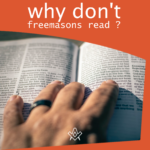 The title of this article will seem somewhat of an oxymoron, because at this precise moment you, most likely a Freemason, is reading this |
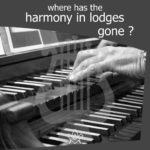 Music can make you either remember everything or forget everything! They even call it the 'rhythm' of life because life does have a beat, a rhythm, a song! Music is equally important for Freemasons. |
 Young Masons' Inter-Club Virtual Social An initiative was created to initially keep Brethren engaged in their Masonry whilst the restrictions of the COVID-19 pandemic are in place. |
 I've heard people say that we don't have heroes |
 What can we learn from Steve Jobs' address given at Stanford in 2005 |
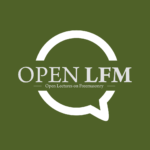 Open Lectures on Freemasonry as a series of monthly online lectures that aims to increase the visibility and accessibility of research into Freemasonry. The lectures are open to anyone who is interested. |
 What Kind of Library Do You Have? Many Brothers have no clue as to what kind of "Craft" library they actually have in their home or office. Most of these Brothers don’t care that they don't know – so, what kind of library do you have? |
 Russian Freemasonry a combination of a short sketch of its history and a review of the present-day Masonic landscape in this country |
 A brief outline showing the differences and similarities within Freemasonry |
masonic knowledge
to be a better citizen of the world
share the square with two brothers

click image to open email app on mobile device









